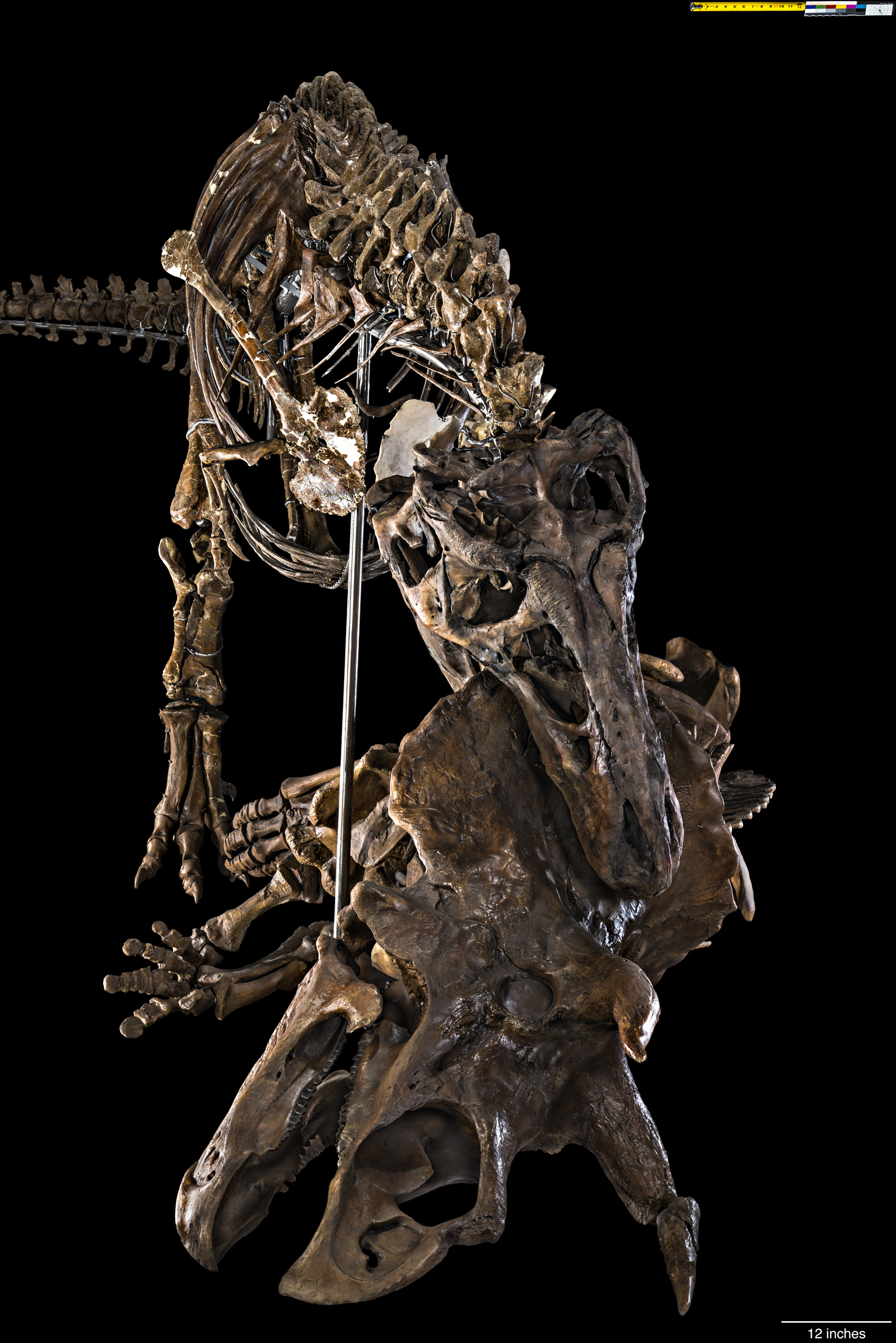Adding insult to extinction

Anterior view of Tyrannosaurus rex biting the skull of Triceratops horridus.
In 1988, rancher Kathy Wankel discovered this Tyrannosaurus specimen while hiking on land managed by the U.S. Army Corps of Engineers. After a little digging with a garden shovel and a jackknife, she unearthed the first complete T. rex arm ever found. Dr. Jack Horner of the Museum of the Rockies led the mission to excavate the rest. This specimen was loaned to the Smithsonian in 2014 for 50 years, where it is to be displayed with the composite cast of a Triceratops horridus, assembled from the remains of several individual specimens. (Photo by Gary Mulcahey, Smithsonian Institution)
In its time, Tyrannosaurus was the largest meat eater in western North America. It feasted on dinosaurs large and small, including plant eaters like the Triceratops. Few—if any—animals could take down a healthy, adult Tyrannosaurus.
As the apex predator, the “tyrant king” affected the entire community. Each meal Tyrannosaurus killed or scavenged helped keep populations of some species in check and provided leftovers for others.
In its new pose devouring a Triceratops, the Nation’s T. rex is the centerpiece of “The David H. Koch Hall of Fossils—Deep Time,” a 31,000-square-foot dinosaur and fossil hall at the Smithsonian’s National Museum of Natural History.
Posted: 12 June 2019
- Categories:







